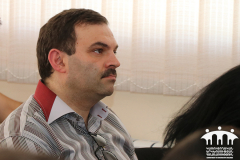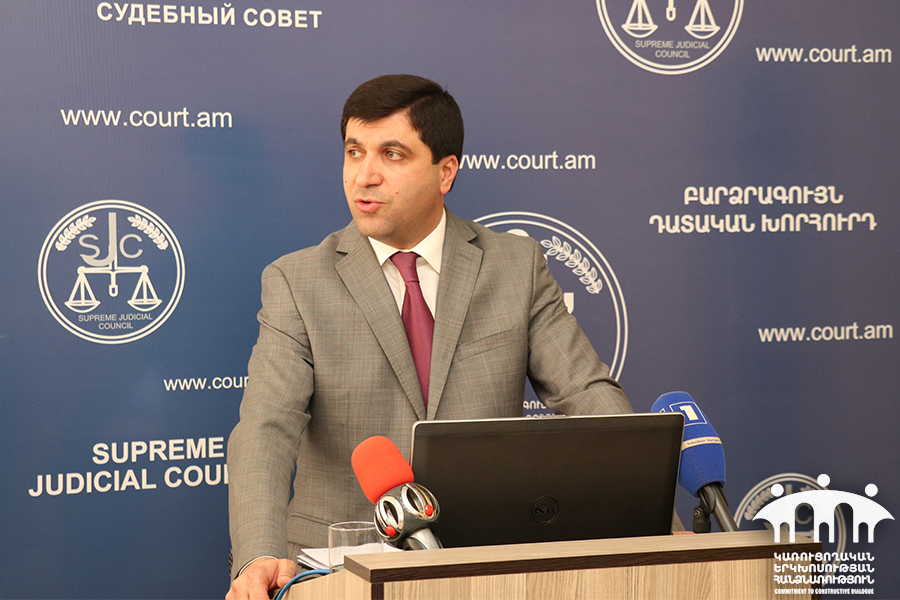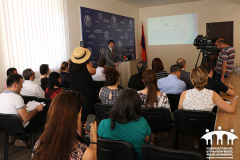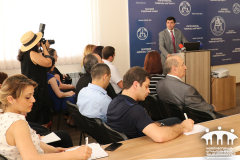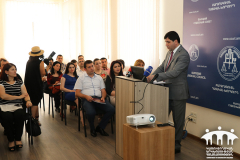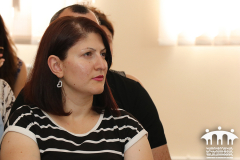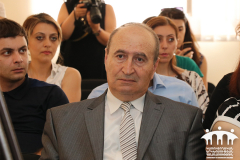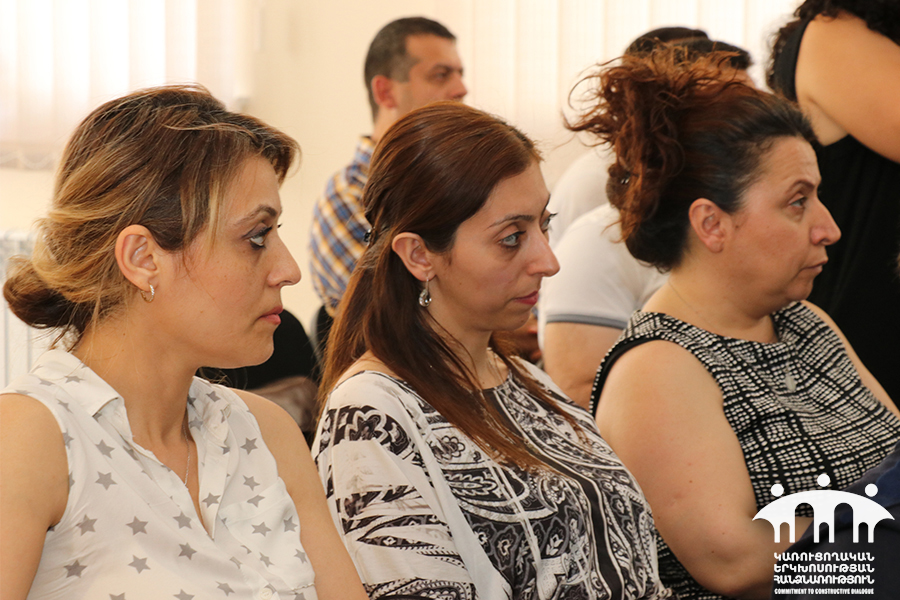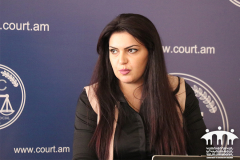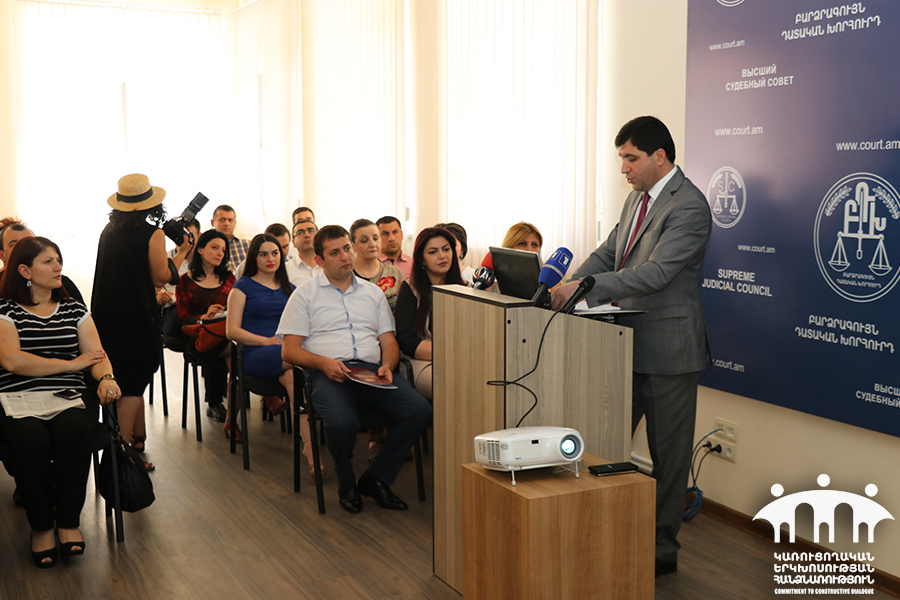
Representatives of the “Armenian Lawyers Association” non-governmental organisation, members of the State and Legal Committee of the Public Council Mr. Marat Atovmyan and Mr. Artyom Mesropyan, with a number of civil society representatives participated in the discussion of the Medium Term Expenditure Framework for 2020-2022 and the Applications for Budget Financing for 2020 of the Supreme Judicial Council and Courts of the RA. The meeting was held in the scope of the EU funded “Commitment to Constructive Dialogue” project.
Welcoming the participants, the Head of the Judicial Department Mr. Karen Poladyan noted in his opening speech that the imperative to organize a discussion of the draft judicial budget in such a format is conditioned by the consistent necessity of increasing the public accountability and transparency of the judiciary, as well as by the letter of 24.05.2019 of the Prime Minister’s Chief of Staff.
Briefly introducing the draft budget developed by the Department, the Head of the Department noted that the 2020 budget application of the judicial system is 21,195,745,000 AMD, which is planned to be implemented within the framework of one program. It includes 22 measures, 16 of which refer to the courts of the Republic of Armenia separately, 1 to the Supreme Judicial Council and the central body of the Judicial Department, 1 to the Court Reserve Fund, and the other 4 are expenses of not financial assets.
Ms Liliana Gasparyan, the Head of the Judicial Department’s Finance and Budget Department, in her turn presented the drafting and development of the draft budget proposal in detail. She also touched upon the study of international experience that they carried out, particularly emphasizing the example of the Netherlands, which basically served as the basis for drafting the budget proposal.
The structure of the draft budget proposal was also presented. It includes a general description of the strategy of the state body and the budget programs and measures implemented by the state body.
It was emphasized that during the compilation of this budgetary financing, the implementation of such target programs was particularly important in relation to phase by phase introduction of electronic justice, the modernized digital justice system, monitoring of the judicial system, the reduction of justice costs, the rooting of judicial archives and the complete digitalization of current cases, qualitative improvement of courts buildings and logistics conditions, ensuring the necessary and sufficient guarantees for the material and social independence of the courts and judges, optimal workload of judges, ensuring their performance evaluation system based on objective criteria, and so on.
In the course of the discussion, a number of issues were addressed by the representatives of the civil society concerning the specific provisions mentioned in the budget application and the general problems faced by the judiciary.
Mr. Mesropyan, representative of the Armenian Lawyers’ Association and the Commission of State and Legal of the Public Council, mentioned that the discussion of the Medium Term Expenditure Framework for 2020-2022 and the Applications for Budget Financing for 2020 was their initiative which is implemented within the framework sub grant project “Budget for All” implemented in the scope of the EU funded “Commitment to Constructive Dialogue” project with the support of the RA Ministry of Finance and by the Government’s instruction. Highlighting the constructive dialogue with state bodies in this process and reviewing the budget proposals based on the proposals submitted, he also noted that in the event of a public response, the government will take steps to create legal basis for that process and make it permanent and continuous.
At the end of the meeting, opinions were voiced that public discussions in such format make the public-state structure a more open and transparent.



